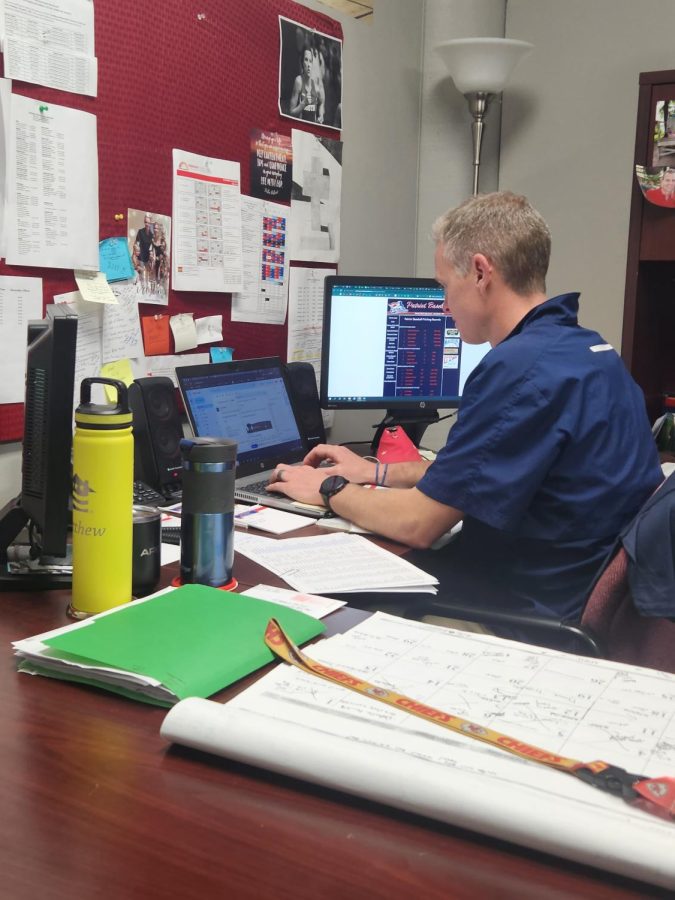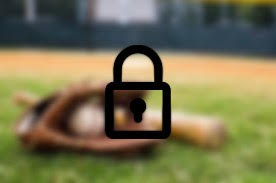New School Choices?
Proposed open-enrollment legislation could allow students to move schools
Athletic Director Matt Roach works at his desk on Monday. Potential open-enrollment legislation could allow athletes to move to schools with better teams.
Hate South? If a current Missouri bill becomes law, there’s a chance for you to go somewhere else.
On March 8, Missouri’s House of Representatives passed House Bill 253, introduced by Republican representative Brad Pollitt, that would allow students to transfer to a school outside of their district that is participating in the program. The bill passed the House and is now onto the Senate. However, while this bill might seem like a good idea at first, there are still downsides including the fact that it will harm more undeveloped schools, schools will have to figure out transportation, removal of diversity and disability factors, and school athletics could also be affected.
The first downside of this new bill is how it will take away state and federal funding from poorer and smaller schools. Local money will still go to that school, and a school can only let 3% of its population transfer, which would be 49 out of the current 1,656 who go to South, but all the state and federal money will follow the transferring students to their new schools. This means that even with a few students leaving, schools will lose funding and this will drastically hurt more underfunded and developing schools, especially in St. Louis City. Not all students will be able to transfer to go to better schools, so the students stuck in poorer schools will have to struggle with the decrease in funding. Instead of letting students move out, why not attempt to help poorer schools? Why not make it so students don’t have to transfer to different schools? This act might force schools to close if they don’t have enough funding, which will create even less education options in certain parts of the city or county. Instead of providing better education options for children, all this bill does is threaten to remove education in poorer communities and create an even deeper social class gap.
Secondly, transportation is definitely going to pose an issue. At the beginning of the bill it states that schools won’t be fined or punished for going over their budget to provide transportation, but it doesn’t say anywhere that money will be given to these schools to help them. State and federal funding will follow the new students, but will this really help? Transportation is already a big issue for St. Louis school districts, especially Parkway, and if schools take on even more students, especially students that live a great deal of distance away from their school, transportation is going to become an even bigger issue and take money away from schools when they could be putting it somewhere else. Parents might also be forced to take on a bigger responsibility and be expected to provide their student’s transportation, but that’s not always an option. Lots of parents work and won’t be able to pick up their kids. Additionally, resources like cabs and taxis also cost money from the school, and will cost more if they’re traveling farther distances. A solution could be that only students with valid driver’s licenses or modes of transportation would be able to transfer, but that would probably cause more controversy than support.
Furthermore, one of the big parts of the bill is that diversity programs that allow support for students of color will be taken away, and that schools without certain resources can deny disabled students. Diversity programs could help students of color or students in underdeveloped areas get spots at these more funded schools, but without them, students in already rich schools or that don’t need the support will be able to take advantage of the bill and erase opportunities for students that need it. In addition, if a school doesn’t have certain programs or resources available for students with disabilities, they will be allowed to refuse their admittance. Why not fund these programs more than just deny students that need help? Disabled and low-income students are the ones that need the most support from this bill, and it’s written to be targeted against them.
Lastly, the effects of open enrollment won’t be entirely academic. For example, athletes at South and other schools could decide to transfer if there’s a team they deem as better or more suited to their needs. This will create tension between the schools and further unfairness in athletics. One school could be jacked up with good athletes and others wouldn’t even one. However, there are some advantages to this as well. Some of the good teams at South, including the Girls’ Swim Team who has won State the past two years, could gain strong swimmers from other schools. But that would only be one part of the athletic system. The rest would probably fall.
In conclusion, the potential open enrollment legislation does all but help and instead targets undeveloped schools, creates a bigger strain on transportation, threatens disabled and low-income students, and creates tension between school athletics. Instead of letting students move around, St. Louis needs to fund these poorer schools and make it so parents won’t even want their students to transfer. Why create less options when we really need more?







